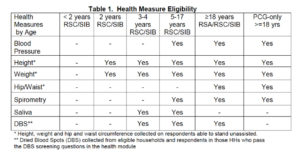Overview
The Los Angeles Family and Neighborhood Survey was designed to enable research on neighborhoods, neighborhood change, and contextual effects on households and individuals, by collecting longitudinal data on neighborhoods, families, children, and on residential choice and neighborhood change.
Data Collection
The first wave (L.A. FANS-1), which was fielded between April 2000 and January 2002, interviewed adults and children living in 3,085 households in a diverse stratified probability sample of 65 neighborhoods throughout Los Angeles County. In the L.A. FANS Wave 2 that was fielded from 2006 to 2008, attempts were made to reinterview all primary respondents from Wave 1 whether or not they continue to live in their Wave 1 neighborhoods. A sample of individuals who moved into each sampled neighborhood between Waves 1 and 2 were also interviewed. In Wave 2, respondents living within L.A. County were interviewed in person. Those outside of L.A. County were interviewed by telephone. Health assessments and biomarkers were collected only for those interviewed in person.
Biomarkers
A new feature of L.A.FANS 2 was the addition of physiological health measures collected in the field. Field Interviewers (FIs) collected blood pressure, pulse, height, weight, hip and waist circumference, and pulmonary function data (spirometry) from respondents immediately after the interview in the respondents’ homes. Interviewers also instructed parents how to collect and ship saliva samples from their children. Saliva samples were collected by parents the day after the interview at three times during the day (upon awakening, 30 minutes after awakening, and at bedtime), sent by overnight FedEx to Salimetrics and assayed for cortisol. All L.A.FANS 2 respondents were eligible to be screened for collection of basic health measures for their age group. In addition, approximately 50% of LAFANS households were randomly selected for dried blood spot (DBS) collection and all respondents, except for PCGs, within households were eligible to be screened for DBS collection. Health technicians (HTs), who were licensed phlebotomists, collected DBS samples in a separate visit. The DBS were assayed for CRP, hemoglobin A1c, cholesterol (total and HDL), and EBV.

RSC = randomly selected child
RSA = randomly selected adult
SIB = sibling of RSC
PCG = primary caregiver